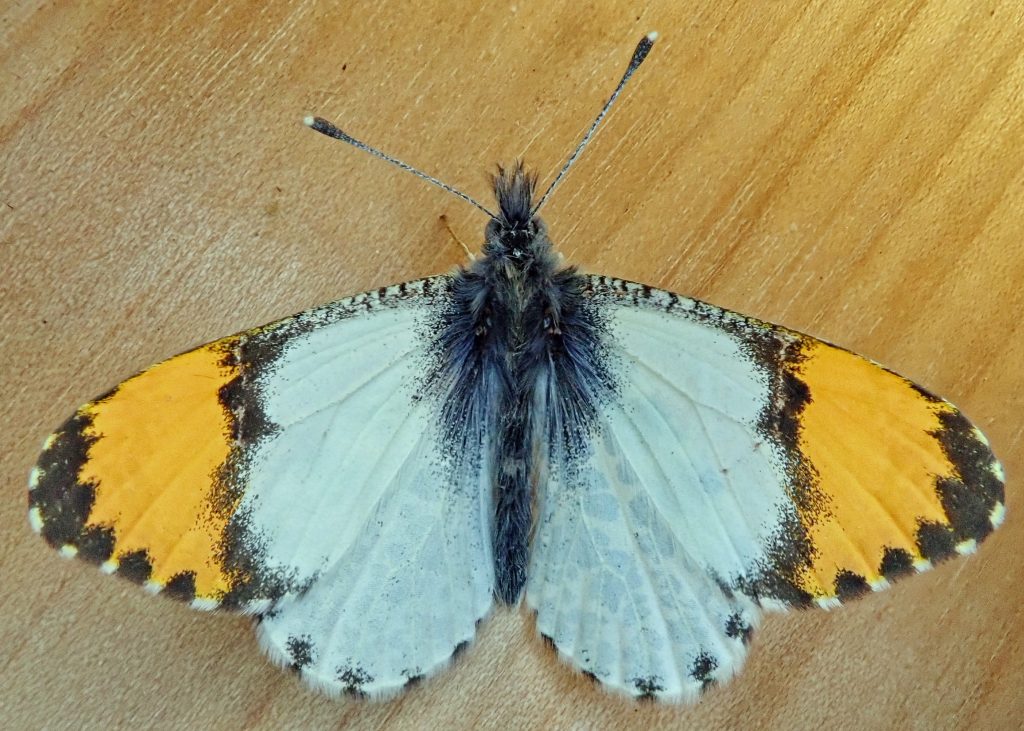
One of the first butterflies of the spring in our region is the Julia Orangetip. Their delightful strobing orange flight can be seen as early as the first sunny days of March. They can be a real challenge to a butterfly photographer since they seldom stop moving for long enough to approach them and get a decent shot. In the last couple of years I’ve seen dozens, mostly in the Catherine Creek area in Klickitat County, and I haven’t gotten a single photo of one that was perched. So this year I asked my nbo Morgan to net one for me, which I photographed after it had ‘chilled out’. Although it didn’t really settle very well then either, and had to be pursued around the apartment as soon as it warmed a bit.
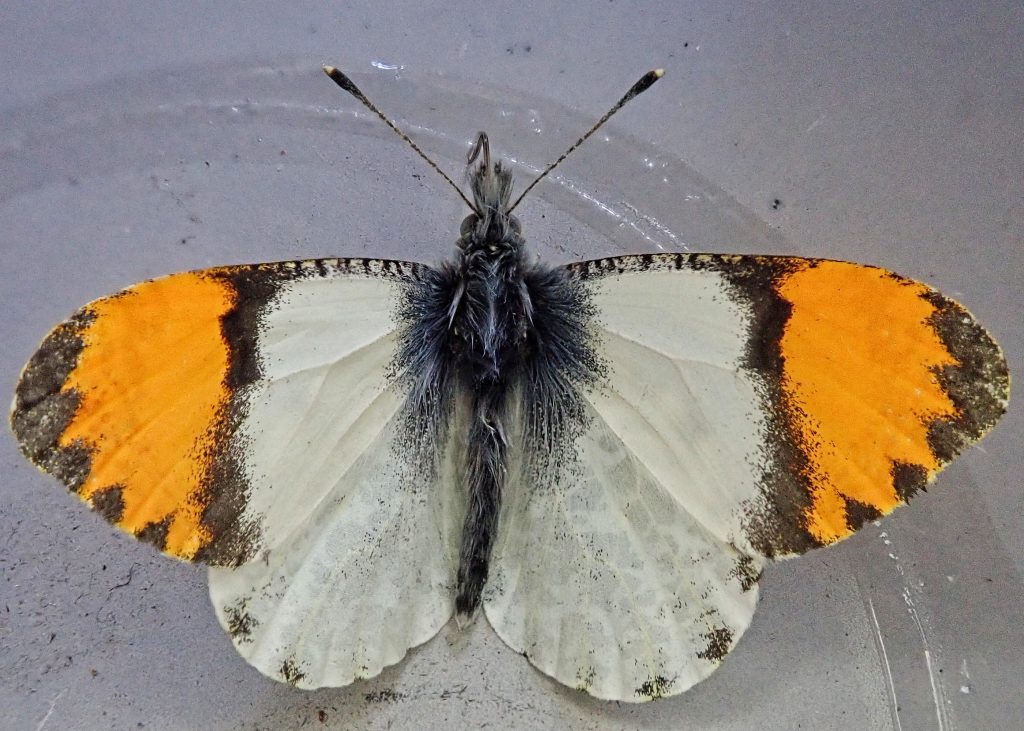
Thanks to Todd Stout’s (2018) extremely well researched, well documented, and convincing paper there is finally an accepted consensus on the speciation of the Anthocharis sara complex. By examining over 700 specimens, almost all of which were raised by he and his colleagues from eggs to adults, he was able to delineate the geographic range of A. sara, A. julia, and A. thoosa, as well as overlap areas, as well as identify definite subspecies. Todd’s paper is linked above and here, and it is well worth reading, if for nothing more than its clarity and its ability to be understood by those of us lacking an entomology degree.
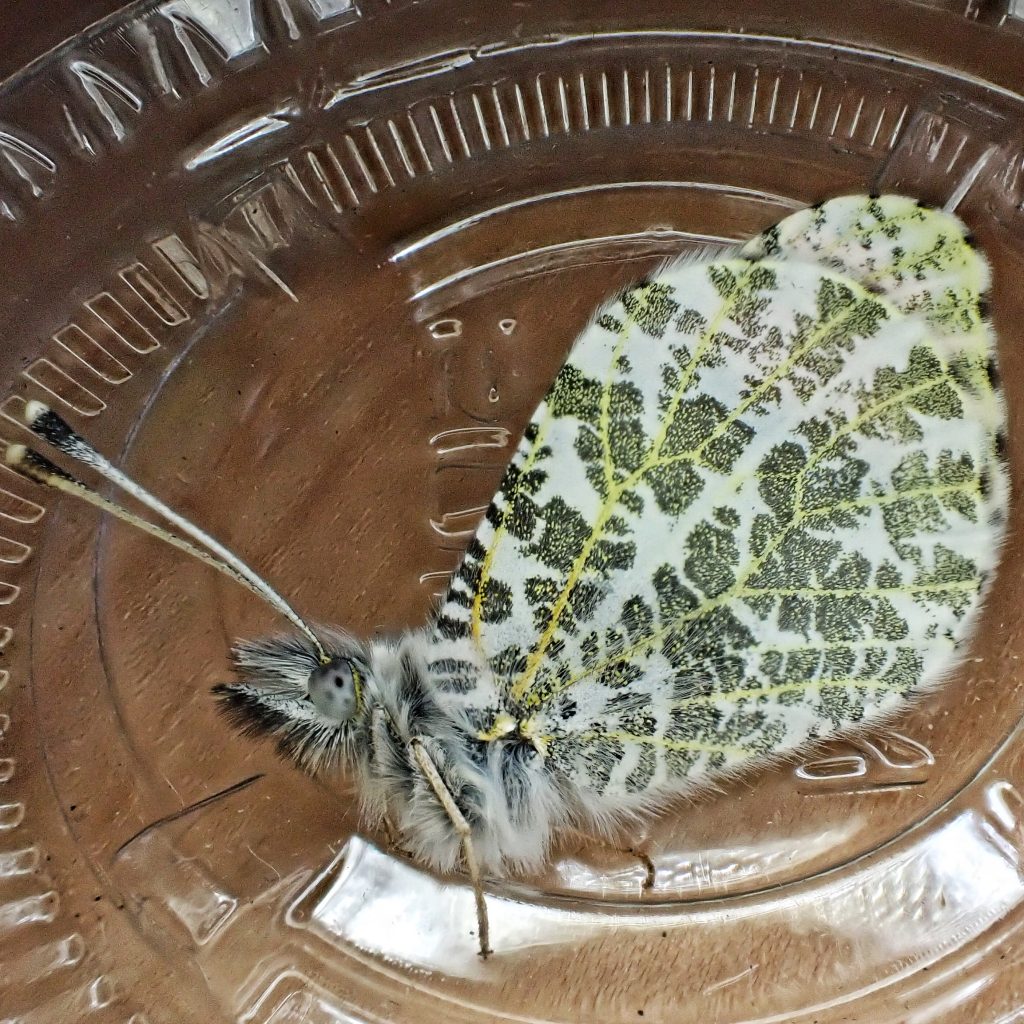
For our purposes the most important part of Todd’s conclusions is that what we in the PNW have all been calling Sara Orangetips (Anthocharis sara) are almost all A. julia (Julia Orangetips), except for some populations south of the Siskiyous, and all along the Oregon/California border. For the most part they can be divided into subspecies A. j. flora from west of the Cascades, and A. j. sulphuris from the east side. In the overlap zone of the Cascades themselves, and the Columbia River Gorge (such as the ones pictured here), there is much intergrading and subspecies identification is a moot point.
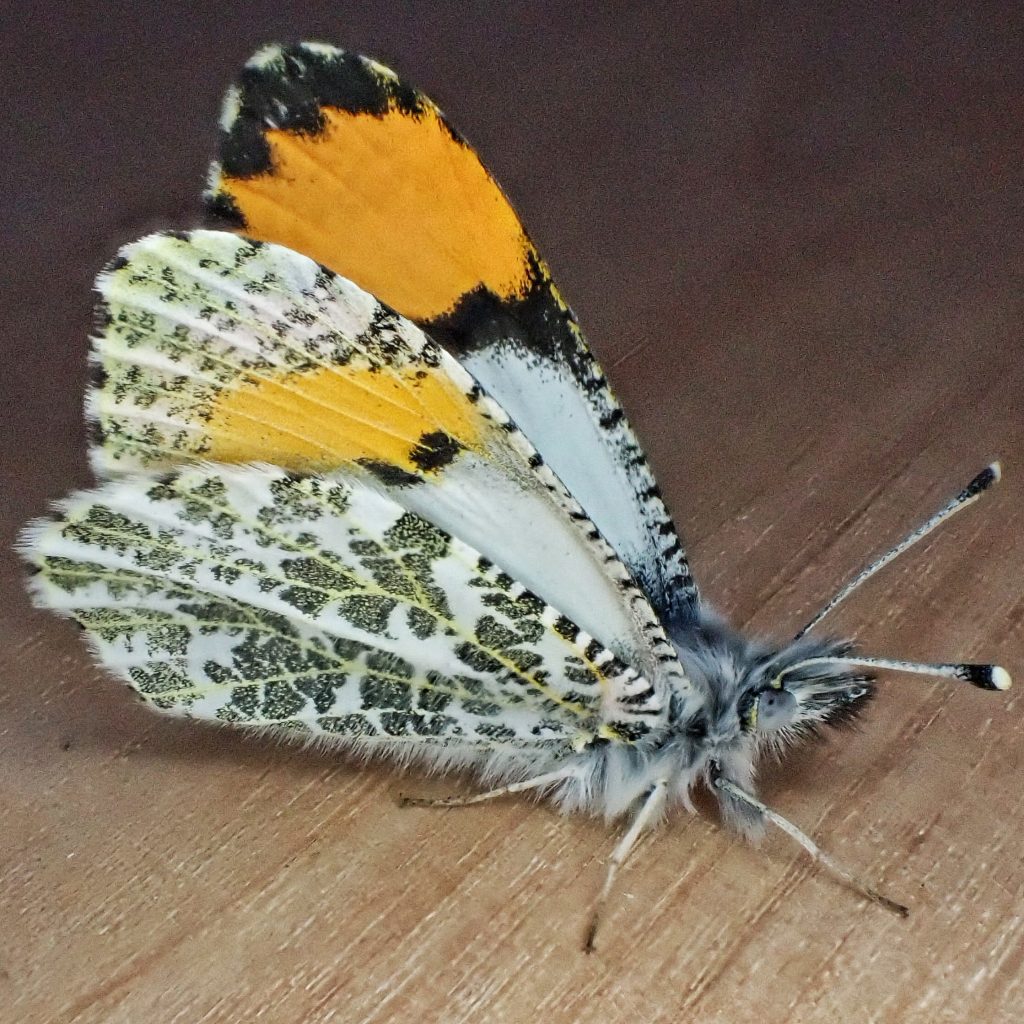
Description– Medium sized butterfly (fw length 12-15mm); Males are usually white, and females are yellow, with bright yellow orange to red wingtips that are bordered in black; ventral hindwing with broken green marbling.
Similar species–A. sara is almost indistinguishable from A. julia, but A. sara doesn’t fly north of the Siskiyous. In the overlap zone along the Oregon/California border very clear closeup photos (or a specimen in hand), and Todd Stout’s reference paper, are required to differentiate between the species, and even then certainty is not assured.
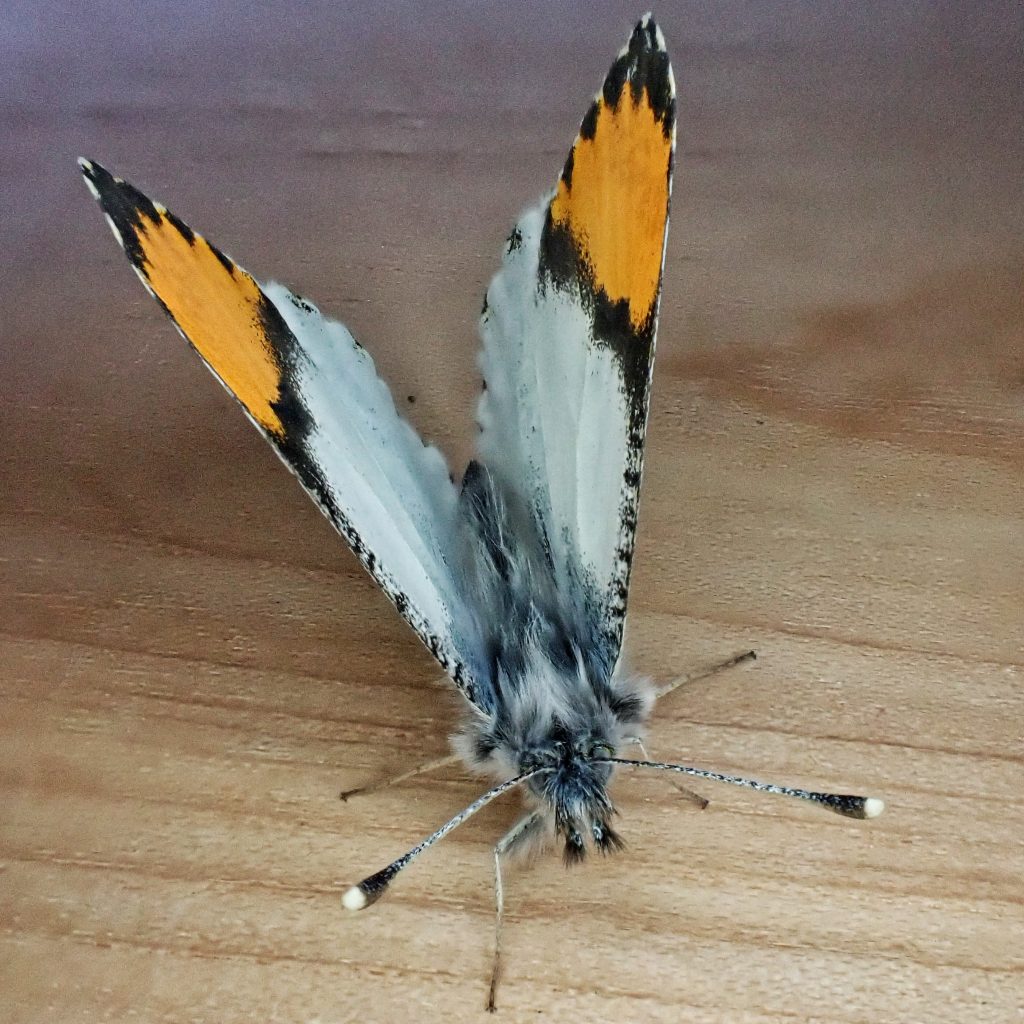
Habitat-Virtually anywhere there are host mustards, although lacking in completely unbroken forests and urban areas.
Range-Region wide in appropriate habitat
Eats-Larval hosts are various mustards, mostly in the genera Cardamine and Arabis; adults nectar on the same mustards, as well as other flowering plants.
Eaten by– Due to chemicals in the mustards they consume both larvae and adults are probably distasteful to mildly toxic if eaten.
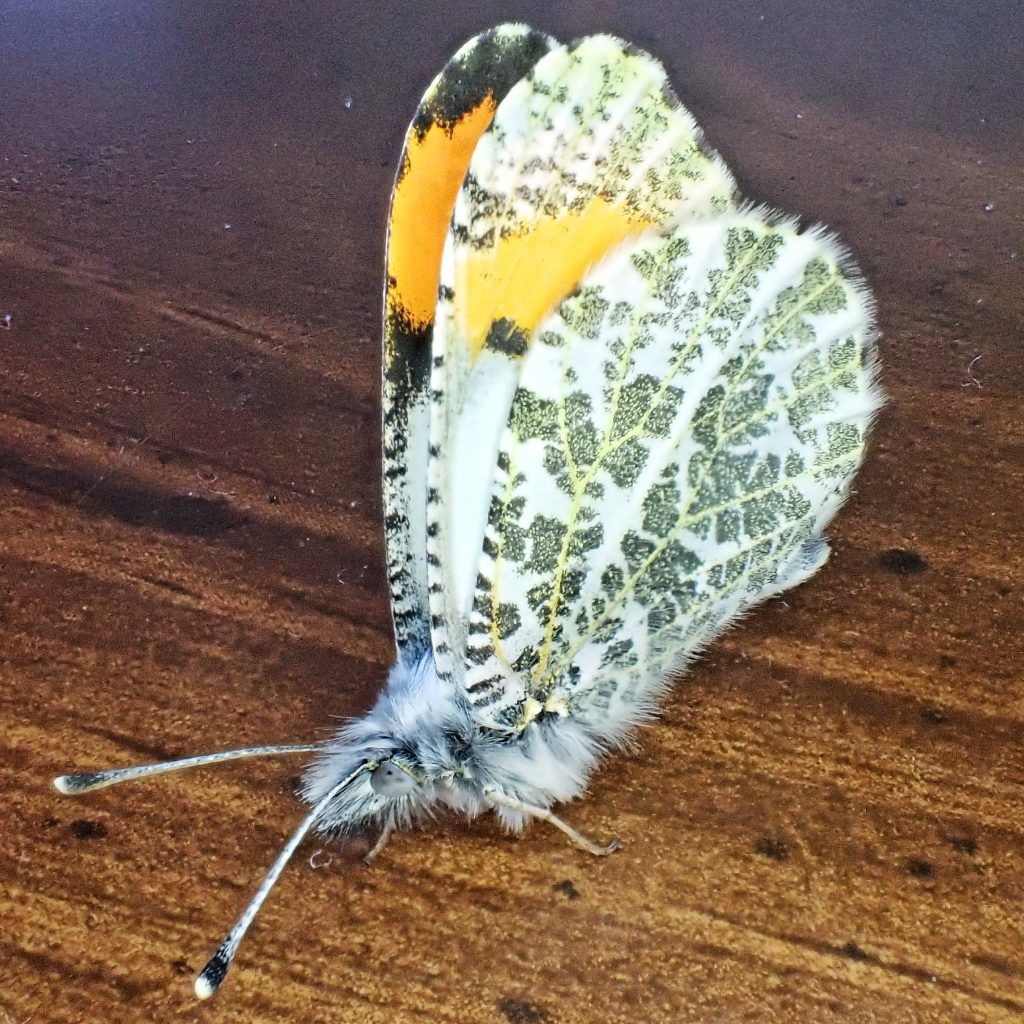
Reproduction-Eggs are laid singly on the pedicels of host plants; larvae overwinter in pupal state; eclosure of this single generation (univoltine) species is staggered, so that it seems like they are bivoltine; unlike many other members of the A. sara complex, most A. julia only overwinter once.
Adults active– March to August, with peaks in April and July.
Etymology of names– Anthocharis is from Greek, and translates as ‘flower beauty’. Boisduval et al did not divulge whether they meant it was as beautiful as a flower, or made any flower it landed on more beautiful. Nor did WH Edwards explain who the specific epithet julia pertained to.
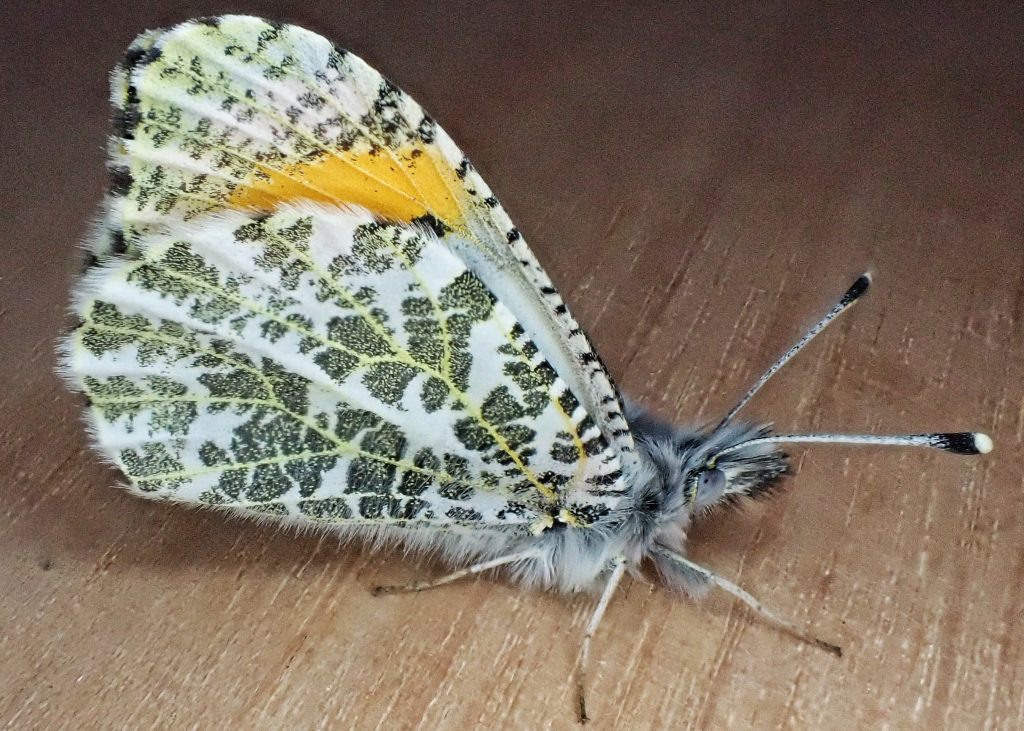
“A review of three species-level taxa of the <i>Anthocharis sara</i> c” by Todd L. Stout
https://bugguide.net/node/view/1513447
https://www.jeffpippen.com/butterflies/juliaorangetip.htm
http://fieldguide.mt.gov/speciesDetail.aspx?elcode=IILEPA6110
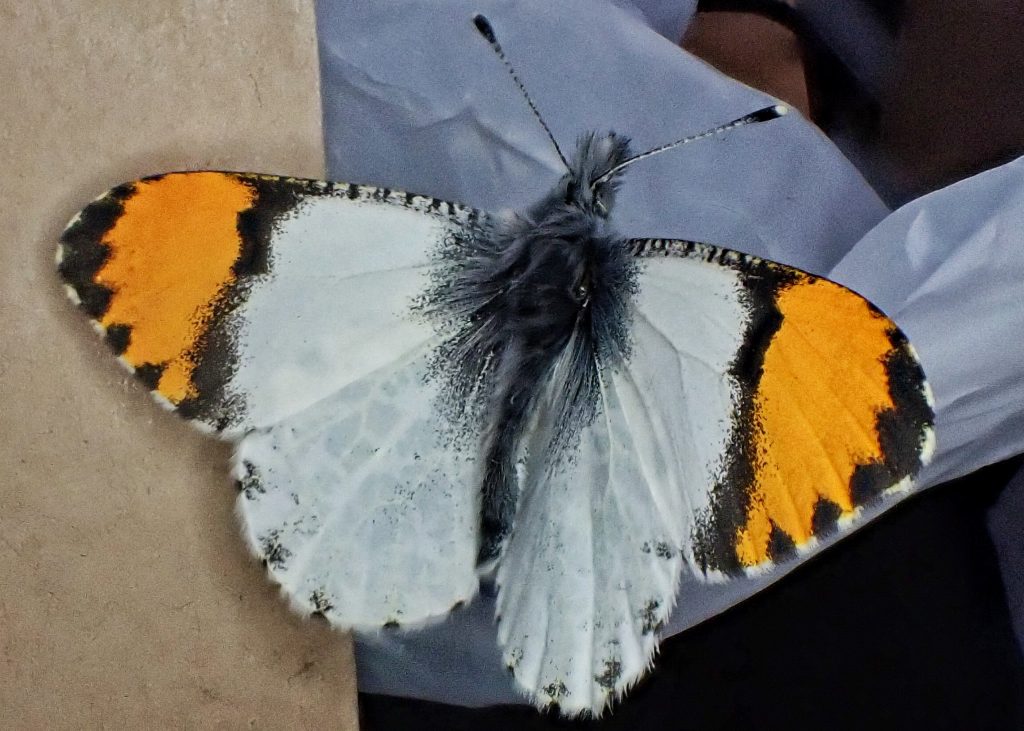
I have Sarah Orange Tip here
After reading the paper, I appear to have both.
I think you’re right
Sorry that wasn’t clear. I left out the word and. It’s corrected now.
Nice paper!! I lived in Everett, Washington, during my high school days; but, never got to see a julia orangetip; even though there are several in the McGuire Center collection at the Florida Museum of Natural History.
Thanks for writing most of my source material!